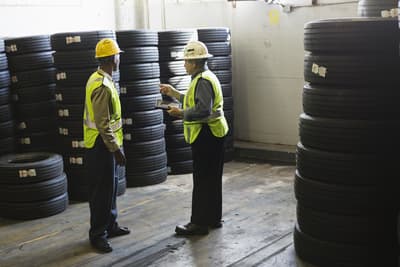How Tyres Are Made
Cars are extremely complex pieces of engineering, but the engine isn’t the only part of the car that is highly thought out. Tyres are extremely important to the way that a car will run, but how exactly are they made, and what are tyres made of?

This blog will cover the different parts of a tyre, as well as looking at how tyres are manufactured to the highest quality for the vehicles that are on the round.
What are tyres made of?
Rubber is the main material used in the manufacture of tyres, though sometimes, up to 200 different raw materials can be combined with rubber to create the components that are needed for the tyre’s construction.
How tyres are made
Blending
Different types of rubber are blended with fillers and other ingredients and mixed in giant blenders to create a black gummy compound. The mixture is then sent to the next process, milling.
Milling
After the rubber has cooled, it is cut into strips and this will form the basic tyre structure. During this stage, other elements are prepared for the tyre, and some are coated with other types of rubber.
Building
At this stage, the tyre begins to take shape and is constructed from the inside out. Other elements including textile, ply, beads, steel, belts, tread and various other components are put into a tyre-building machine. At this stage the tyre looks almost finished and is referred to as a ‘green tyre’.
Curing
The ‘green tyre’ is moved to a curing machine, where hot moulds vulcanise the tyre’s rubber, and all the parts are compressed to form the final shape, tread patterns and sidewall markings.
Final stages
At the final stage, the tyres will be inspected by quality control engineers before they are allowed to be shipped. They are checked for imperfections and some tyres are put through an x-ray machine to check for potential weaknesses.
Pirelli demonstrates the art of making tyres in their video of the construction process below.
22 Oct 2019
Did you enjoy this blog post?
|
6 people found this review helpful
